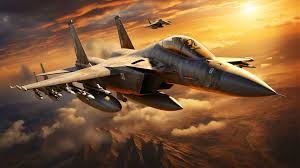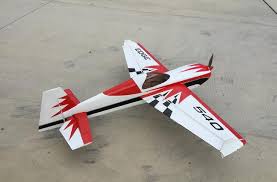Hello! How are you all? Do you want something exciting?? Like learning about Gas-powered RC planes, a completely new thing if yes then you are at the right place because today, we are gonna talk about gas-powered RC planes. A completely new perspective. I’ll even tell you the names of some gas-powered RC places and their features. Let’s get stared babes.
Table of Contents
Introduction
Gas-powered RC planes represent a timeless aspect of remote-controlled aviation. Unlike electric-powered planes, gas models offer a more authentic flying experience, characterized by the sound of roaring engines, extended flight times, and increased power. Enthusiasts who crave speed, power, and the technical challenge of maintaining a combustion engine often prefer gas-powered RC planes over their electric counterparts.

This article delves into the world of gas-powered RC planes, providing you with a comprehensive guide to the best models available today. Whether you’re a seasoned RC pilot or a beginner interested in the raw power and thrill of gas engines, this guide will help you find the perfect plane to suit your flying needs.
Why Choose Gas-Powered RC Planes?
Gas-powered RC planes stand out for several reasons, making them the preferred choice for many serious hobbyists. Below are some of the advantages that these planes offer:
1. Power and Speed
Gas engines deliver more power than electric motors, giving RC planes higher speeds and better overall performance. This makes them ideal for competitive flying, aerobatics, and larger-scale models.

2. Longer Flight Times
Gas-powered RC planes can stay airborne for much longer periods compared to electric-powered models. While electric planes are limited by battery life, gas-powered models can fly for extended periods as long as they have enough fuel, making them suitable for long-distance flying.
3. Authenticity and Realism
The realism of operating an Gas-powered RC planes is unmatched. The sound and smell of the combustion engine, along with the mechanical intricacies involved in starting and maintaining it, add to the overall experience for aviation enthusiasts who enjoy the authenticity of traditional aircraft.
4. Better for Large-Scale Models
If you’re flying larger RC models, gas-powered planes are the best option. Their powerful engines can easily handle the increased weight of large-scale aircraft, offering more control and a smoother flight.

5. Fuel Availability and Convenience
While electric planes rely on recharging batteries, gas planes can refuel quickly and continue flying. This makes them more convenient for long flying sessions without the need to carry multiple batteries or wait for recharges.
Factors to Consider When Choosing a Gas-Powered RC Plane
Before investing in a Gas-powered RC planes, it’s essential to understand the factors that will affect your choice. Here are some key things to keep in mind:
1. Engine Size
The size of the engine directly affects the plane’s performance, speed, and power. Larger engines provide more power and speed, but they also require more fuel and produce more noise. Choose an engine size that matches your flying style and needs.
2. Weight and Size
Gas-powered RC planes tend to be larger and heavier than electric models. Make sure your choice of plane is compatible with your flying area and skill level. Heavier planes may require larger open spaces and more experience to handle effectively.
3. Skill Level
Gas-powered planes are typically more complex to operate than electric models, and they require a certain level of technical expertise. Beginners should start with simpler models that are easier to control, while advanced pilots may opt for more intricate designs.

4. Flight Time and Fuel Efficiency
Different planes have varying fuel consumption rates, which will affect how long you can fly. If you’re looking for extended flight times, consider planes with efficient engines that offer more time in the air per tank of fuel.
5. Durability and Materials
Gas-powered planes are often made from more durable materials, but crashes and rough landings can still take their toll. Look for models made from strong, lightweight materials like balsa wood, fiberglass, or composite plastics to ensure longevity.
6. Price
Gas-powered RC planes generally cost more than electric models due to the complexity of the engines and the materials used in construction. Factor in the cost of maintenance, fuel, and parts when budgeting for your purchase.
Top Gas-Powered RC Planes: Best Picks for Power and Speed
1. Hangar 9 Ultra Stick 30cc

The Hangar 9 Ultra Stick 30cc is a versatile and powerful Gas-powered RC planes that caters to both intermediate and advanced flyers. Known for its impressive flight performance, this model is perfect for aerobatic flying, with the power to perform loops, rolls, and other advanced maneuvers.
Key Features:
- 30cc gas engine with a robust power output.
- Large wingspan of 81 inches for better control and stability.
- Durable balsa and plywood construction for longevity.
- 4-channel control system for precise movements.
- Flap-equipped design for improved maneuverability.
Why It’s Great for Power and Speed: The Ultra Stick 30cc delivers a balance of speed and agility, making it perfect for aerobatic flights and high-speed passes. Its large wingspan ensures stability during flight, while the powerful 30cc engine offers excellent thrust and control. Whether you’re flying for fun or looking to perform complex tricks, the Hangar 9 Ultra Stick is a reliable choice.
2. Top Flite Giant Scale P-51D Mustang

For RC pilots who love classic warbirds, the Top Flite Giant Scale P-51D Mustang is a legendary model that offers both power and historical authenticity. This gas-powered plane replicates the iconic World War II fighter, complete with a scale appearance and impressive performance.
Key Features:
- 55cc to 85cc gas engine for maximum power.
- True-to-scale design with realistic details and trim scheme.
- 86-inch wingspan for increased lift and stability.
- Retractable landing gear for enhanced realism.
- Durable wood and fiberglass construction.
Why It’s Great for Power and Speed: The P-51D Mustang offers immense power thanks to its large engine, making it ideal for fast, aggressive flying. It’s realistic design adds to the overall experience, as the plane looks just like its full-scale counterpart in the sky. The large wingspan and retractable landing gear provide excellent performance and aesthetic appeal for history enthusiasts and RC hobbyists alike.
3. Seagull Models Yak 54 33cc

The Seagull Models Yak 54 33cc is a gas-powered RC planes designed for aerobatics, offering precision and agility in the air. With its lightweight frame and high-performance engine, this model is perfect for experienced pilots who want to perform intricate maneuvers with ease.
Key Features:
- 33cc gas engine for high-speed aerobatics.
- Lightweight design with balsa and plywood construction.
- Sleek, aerodynamic shape for reduced drag.
- 73-inch wingspan for added stability and control.
- Designed for 3D aerobatic performance.
Why It’s Great for Power and Speed: The Yak 54 is a superb choice for pilots who want to push the limits of aerobatic flying. Its lightweight yet durable construction allows for quick, sharp movements in the air, while the powerful engine ensures you have plenty of thrust for loops, rolls, and other high-speed maneuvers. Whether you’re competing in aerobatic competitions or just want a thrilling flight experience, the Yak 54 delivers on all fronts.
4. DLE Edge 540 30cc

The DLE Edge 540 30cc is another fantastic option for pilots seeking high-speed performance and aerobatic capabilities. Known for its precision and smooth handling, the Edge 540 is ideal for both intermediate and advanced flyers who want a versatile plane that can handle different flying styles.
Key Features:
- Powerful 30cc gas engine for rapid acceleration.
- Aerodynamic design optimized for aerobatics.
- Sturdy construction with balsa wood and fiberglass materials.
- Large 77-inch wingspan for increased stability.
- 3D capable for advanced flying techniques.
Why It’s Great for Power and Speed: The Edge 540 is well-known in the RC community for its excellent aerobatic performance. Its powerful 30cc engine provides plenty of thrust, while its sleek design ensures smooth, controlled flights at high speeds. Whether you’re flying straight lines or attempting advanced stunts, the Edge 540 offers the perfect blend of power and agility.
5. Phoenix Models Focke-Wulf FW-190 50cc

The Phoenix Models Focke-Wulf FW-190 50cc is another standout gas-powered warbird that combines historical design with modern RC technology. Modeled after the famous German fighter from World War II, this plane offers impressive speed and power, with a detailed, scale design that appeals to collectors and history buffs.
Key Features:
- 50cc gas engine for high-speed flights.
- Scale design with authentic German WWII markings.
- Retractable landing gear and flaps for added realism.
- 88-inch wingspan for exceptional stability and control.
- High-quality wood construction for durability.
Why It’s Great for Power and Speed: The FW-190 is not just a beautiful plane but a powerful one too. Its large 50cc engine offers plenty of speed, and its 88-inch wingspan ensures stability even at high altitudes. Whether you’re flying for fun or participating in scale competitions, the FW-190 provides a realistic, high-powered flying experience that’s hard to beat.
Maintenance Tips for Gas-Powered RC Planes
Owning a gas-powered RC planes requires regular maintenance to keep the engine and airframe in top condition. Here are some essential tips to ensure your plane stays in the air for as long as possible:
1. Engine Maintenance
The gas engine is the heart of your RC plane, so it’s crucial to keep it clean and well-lubricated. Regularly check the engine for any signs of wear or damage and clean out debris that may accumulate after flights. Use high-quality fuel and oil to ensure smooth engine operation.

2. Pre-Flight Checks
Before every flight, perform a thorough inspection of the plane. Check the control surfaces, servos, and linkages to ensure everything is functioning properly. Tighten any loose screws or bolts and ensure the fuel lines are secure.
3. Fuel Management
Always use the correct fuel mix recommended by the manufacturer for your engine. Store fuel in a cool, dry place, and avoid using old or contaminated fuel, as this can lead to poor engine performance or even damage.
4. Landing Gear Care
Gas-powered planes tend to be heavier, so the landing gear can take a beating during rough landings. Inspect the landing gear for damage after every flight and repair or replace worn components as needed.

5. Storage
Store your plane in a cool, dry place when not in use. Avoid exposing it to extreme temperatures, which can damage both the engine and the airframe. If you’re storing the plane for an extended period, drain the fuel tank to prevent clogs and engine issues.
Gas vs. Electric RC Planes: A Comparative Analysis
Choosing between gas-powered and electric RC planes depends on personal preference and flying style. Here’s a quick comparison to help you decide which type is best for you:
1. Performance
Gas-powered RC planes offer more raw power and longer flight times compared to electric models. However, electric planes are generally easier to maintain and are quieter, making them more suitable for flying in noise-sensitive areas.
2. Complexity
Gas-powered planes require more technical knowledge, especially when it comes to engine maintenance and fuel management. Electric planes are typically more beginner-friendly, with fewer components to worry about.

3. Cost
While gas-powered planes tend to be more expensive due to the engine and fuel costs, they provide more flight time and power, which may justify the investment for serious pilots. Electric planes are more affordable upfront but may require multiple batteries for extended flying sessions.
4. Realism
If you’re looking for a more realistic flying experience, gas-powered planes offer the sounds and sensations of a real aircraft. Electric planes, while more convenient, lack the authentic engine roar that many enthusiasts crave.
Conclusion
Gas-powered RC planes offer an unparalleled flying experience for hobbyists who crave power, speed, and authenticity. From warbirds like the P-51D Mustang and FW-190 to aerobatic marvels like the Yak 54 and Edge 540, there’s a gas-powered model to suit every flying style. While these planes require more technical know-how and maintenance than their electric counterparts, the rewards in terms of performance and flight time are well worth it.

By selecting the right plane and taking care of your equipment, you’ll enjoy countless hours of thrilling flights. Whether you’re an experienced RC pilot or looking to make the leap into gas-powered flying, the models in this guide are guaranteed to provide excitement and satisfaction. For more information check out my website.




